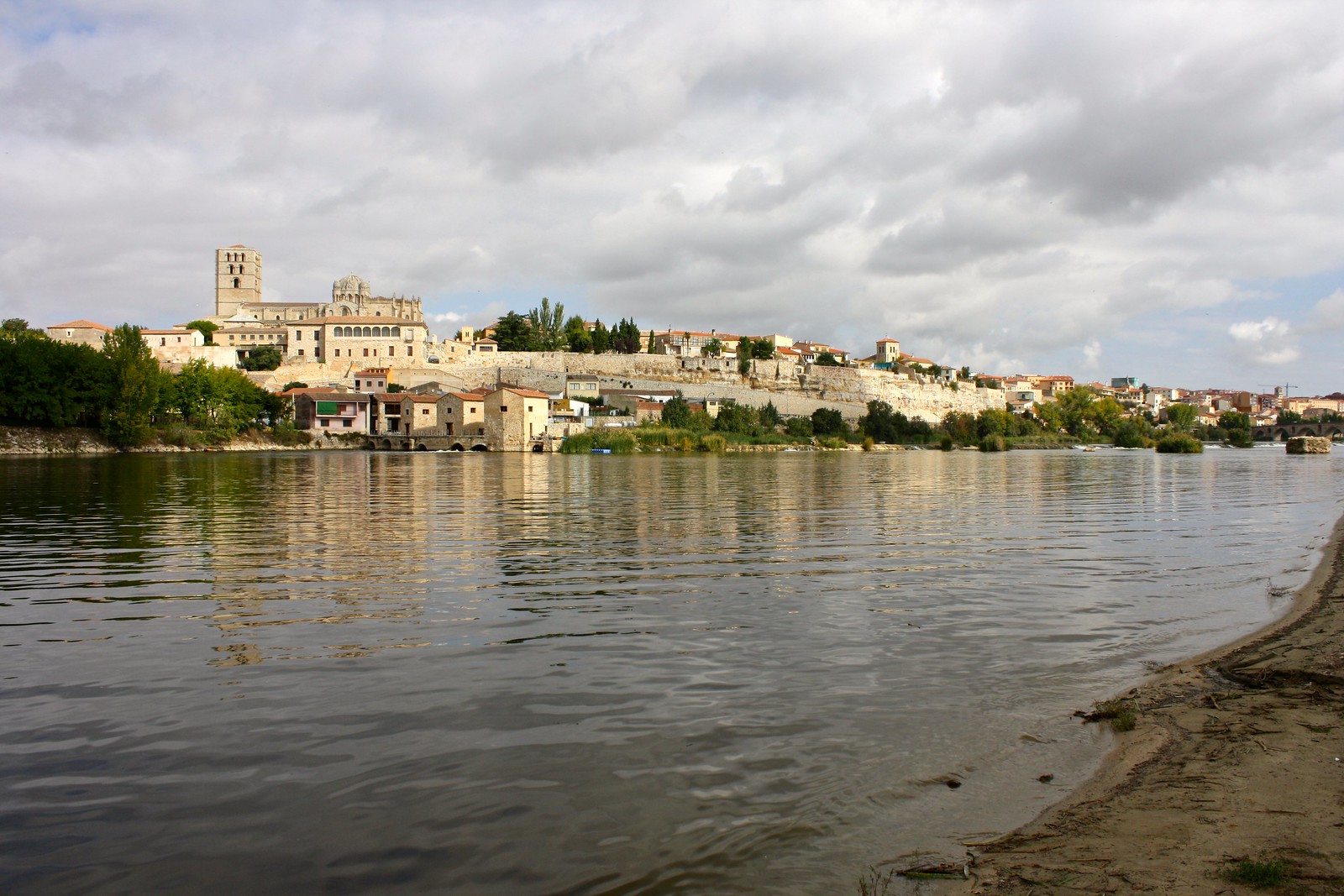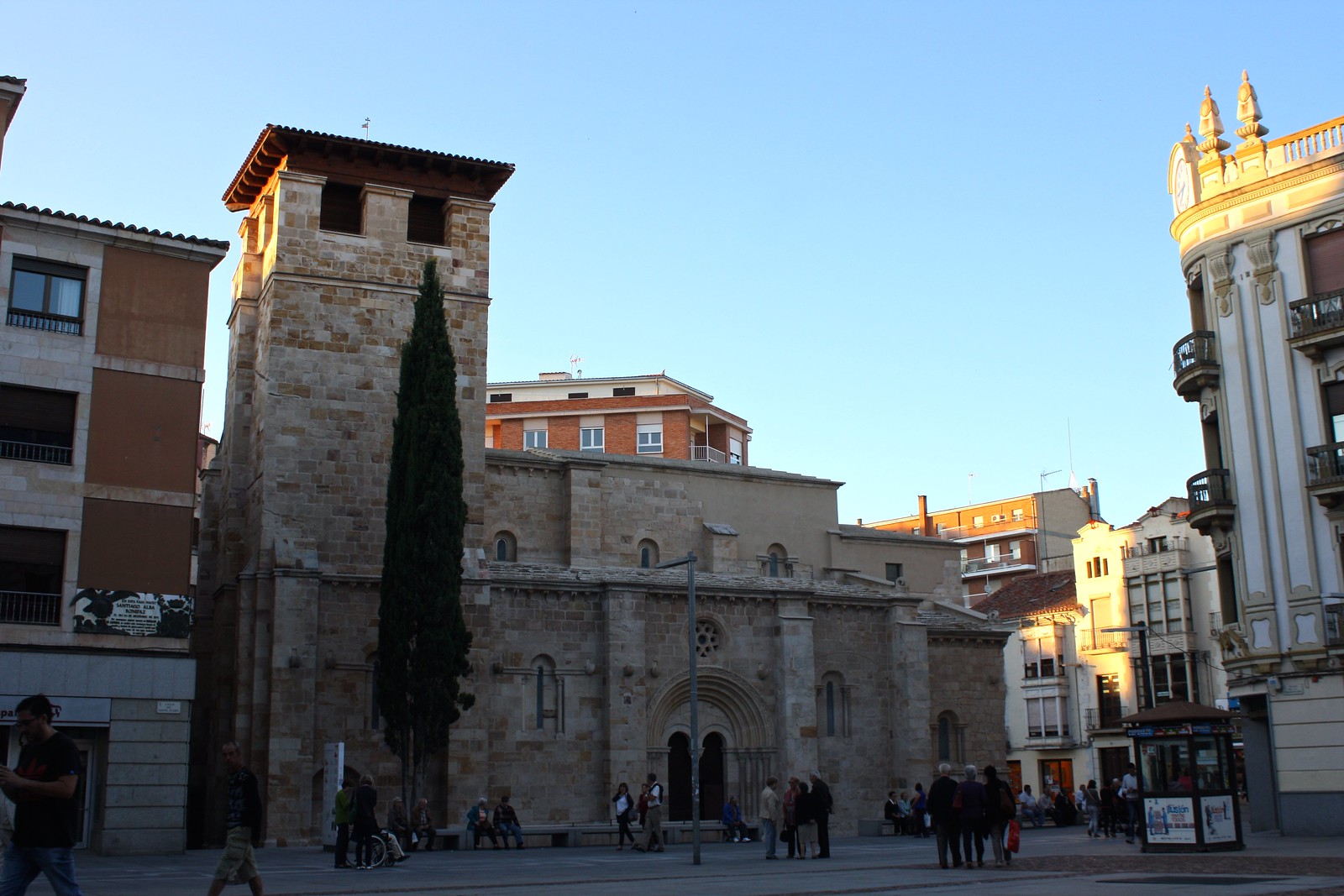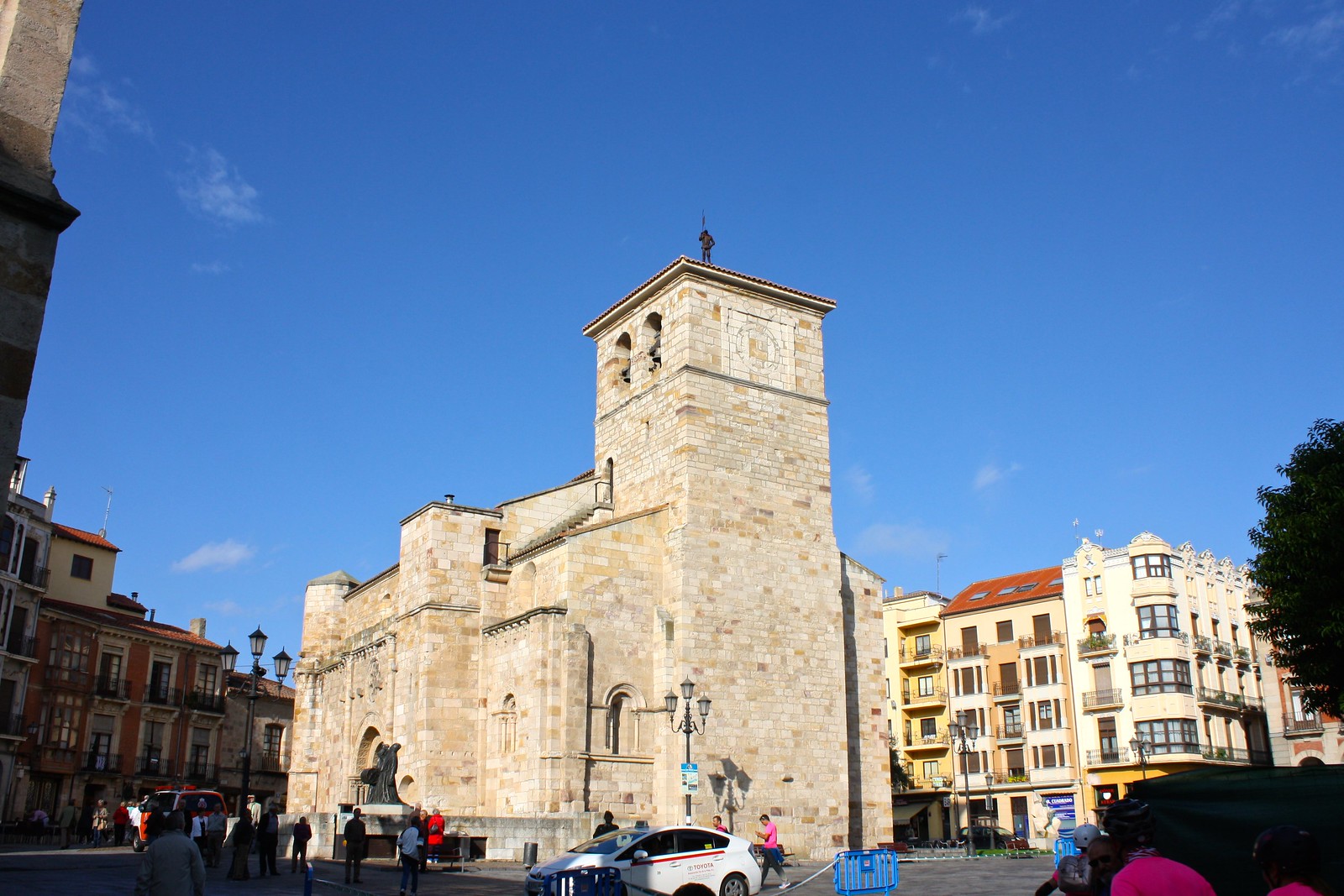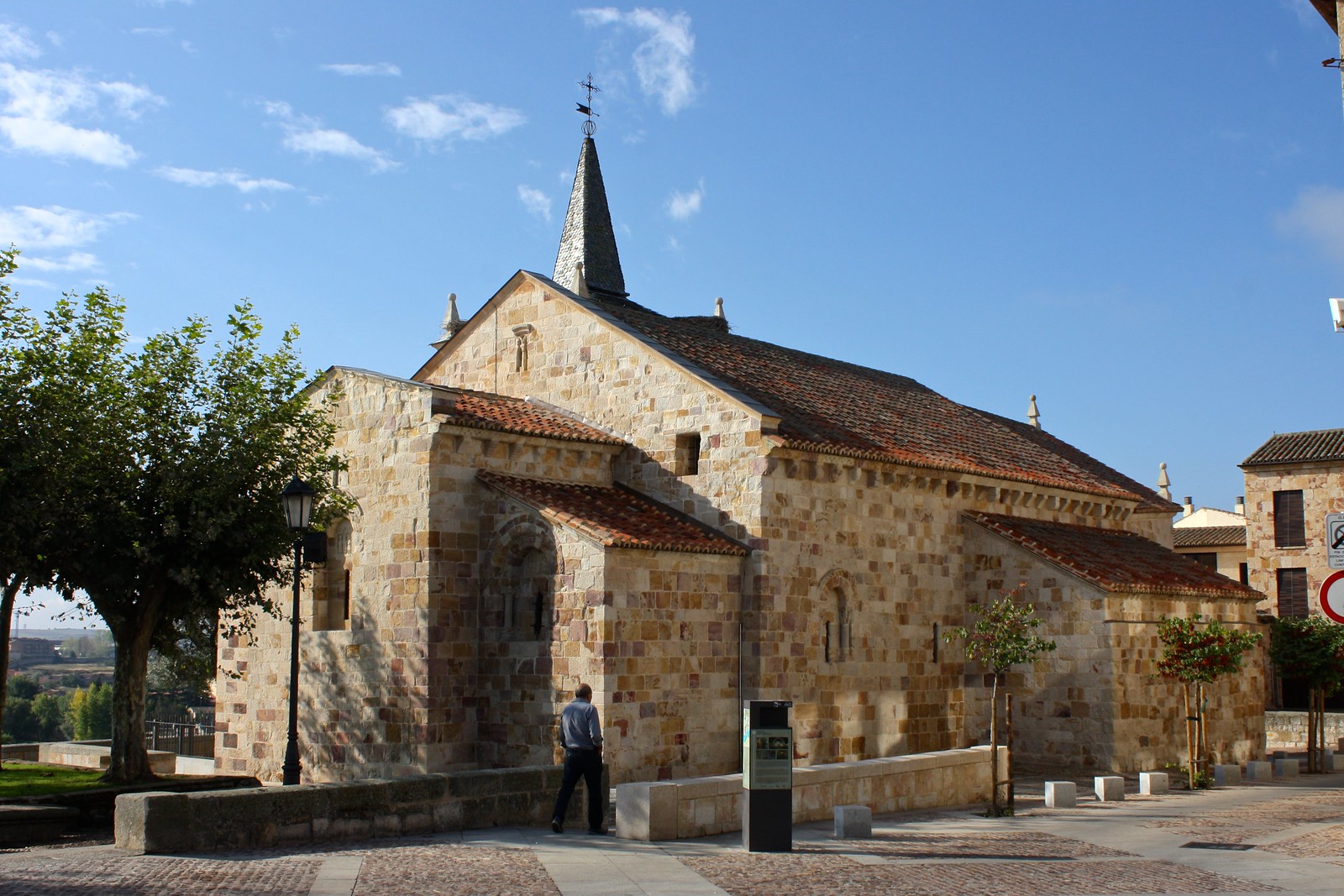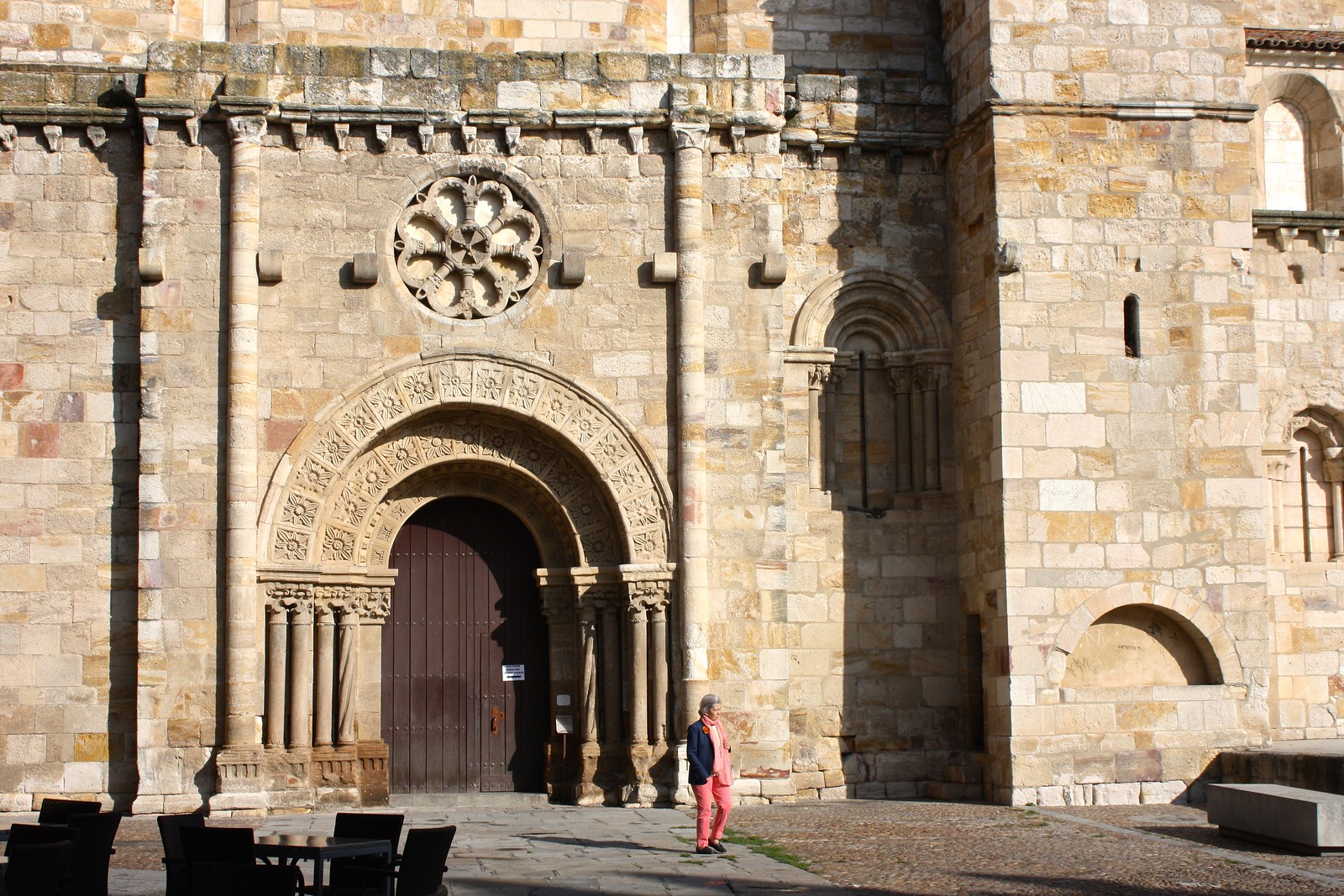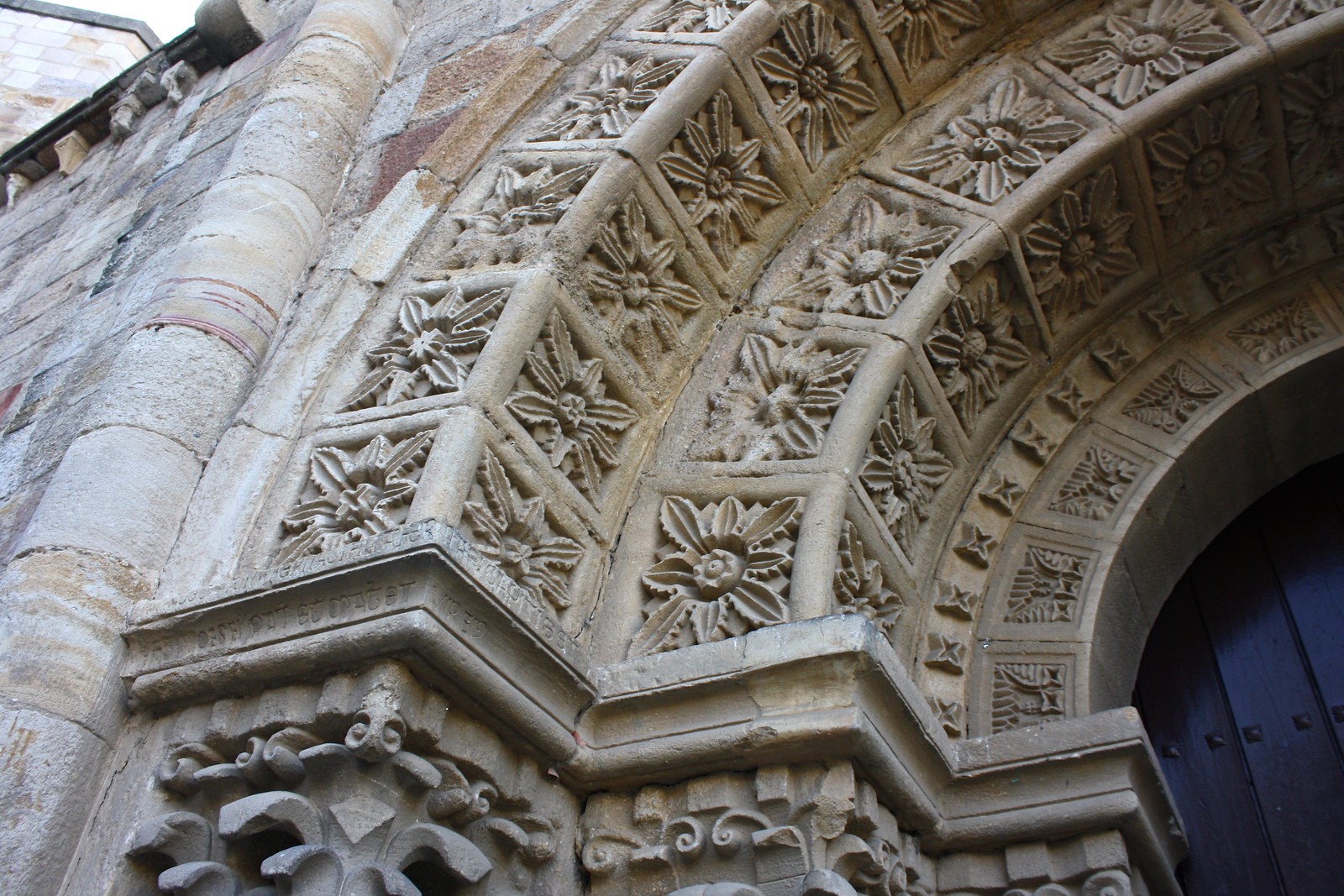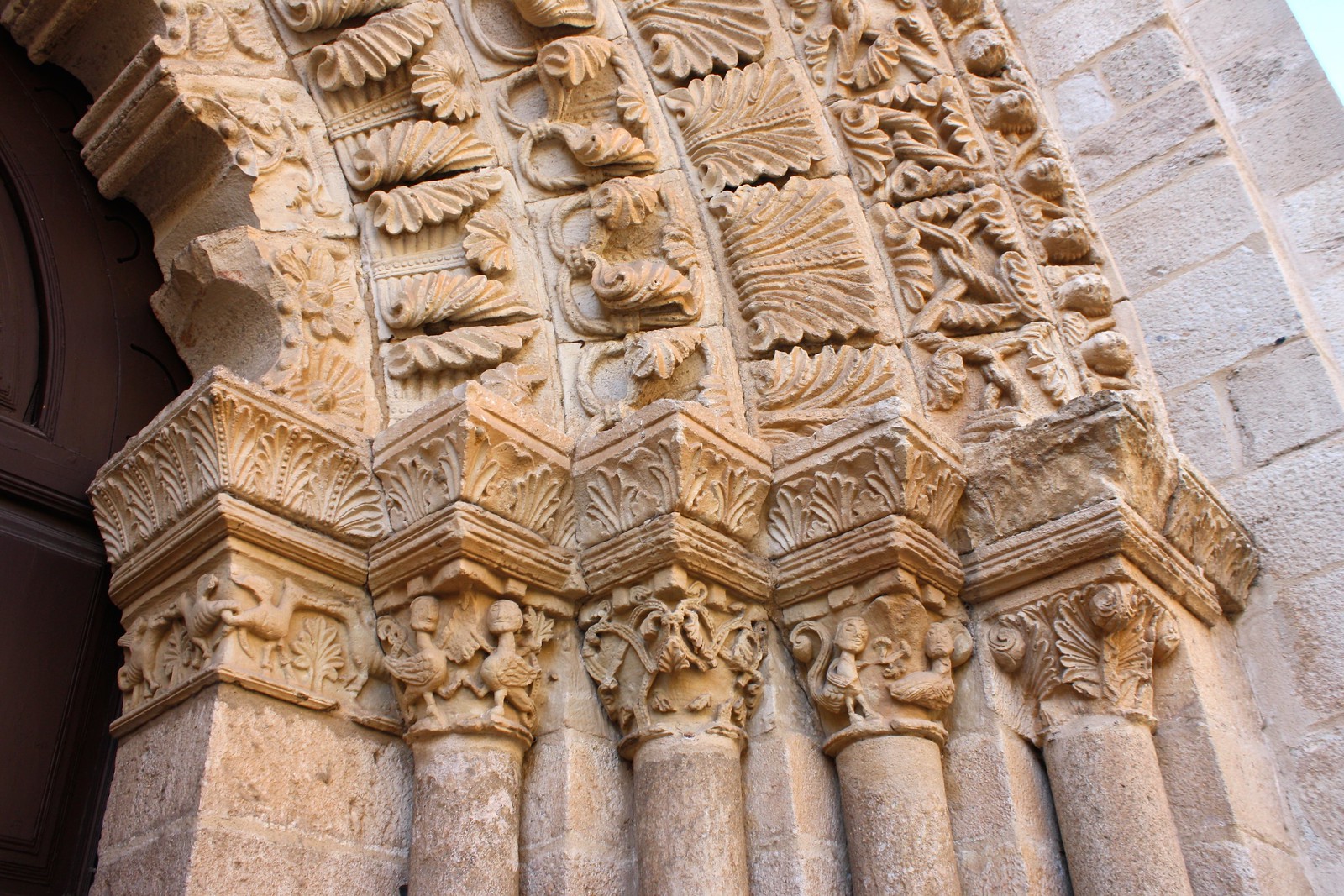There are a few parts of Spain that I know really well, places like
Jaén province in Andalucía to the south, the populated western coast of Galicia, or even central Madrid to a degree. Others are just completely off the radar for me: Madrid’s bedroom community of Guadalajara, coastal Castelló de la Plana, or the Basque Country’s inland capital, Vitoria-Gasteiz. Had it not been for my friend and fellow Spain blogger Kaley (who writes at
Y Mucho Más), the northern Spanish city of
Zamora would have been relegated to this proverbial no-man’s-land in my mind as it typically gets lost between pilgrims walking the
Camino de Santiago to the north (e.g., Burgos, León, etc.) or weekenders hitting up Salamanca and Ávila to the south.
You see, Kaley’s husband is a native of Zamora, and so, naturally, she has talked a lot about the city and province of the same name a lot on her blog. Having followed her posts for the past several years, I was eventually inspired to check out this mid-sized Spanish city in the Leonese half of the huge Castilla y León region in Spain’s
meseta or north-central plateau.
On my way back to
Santiago from
Madrid this fall, I made a two-night pitstop in Zamora, which is conveniently located along the
train line from the capital to Galicia. Coincidentally enough, Kaley and her husband happened to be visiting the in-laws that same weekend so I was fortunate enough to be able to
go out in the evenings with some local zamoranos and visit all their favorite haunts. I loved partaking in the custom of the
bote, in which a group of friends pool, say, ten euros each and then go from place to place getting a tapa, something to drink, and maybe a platter of fried peppers to share and then moving on.
I’m grateful for the opportunity I had to try
pinchos morunos—pork shish-kabobs topped with creamy molten cheese—and potato omelet that had spicy tripe stew sauce drizzled over it. All the while Kaley, her husband, their friends and family, and I
code-switched back and forth between Spanish and English depending on who spoke (or wanted to practice) what language. It was a great experience to get shown around this anonymous Spanish city by longtime residents and not feel like an outsider or tourist, if only for a few hours. (Thanks, Kaley!)
During the day, though, my inner history nerd had a heyday getting to explore one of the finest concentrations of Romanesque architecture anywhere in Europe. From the austere but well-preserved cathedral to half a dozen atmospheric parish churches,
Zamora offers what is essentially a free, open-air museum of the first pan-European architectural movement that emerged after the fall of the Roman Empire. Common from the 1000s through the 1200s, churches built in the Romanesque style typically have semicircular arches and barrel vaults, ornately-sculpted entrances and column capitals, and thick, heavy walls that only allow for narrow windows…and thus rather gloomy interiors.
I can’t get enough of the Romanesque, so I hope my enthusiasm for this most medieval of movements inspires you to pass through Zamora one day, too.
The essentials: the cathedral
Zamora’s cathedral is one of northern Spain’s most interesting churches, and it’s also Castilla y León’s oldest cathedral. Like
the one in Santiago, it’s undergone its fair share of additions and transformations over the centuries, but the interior has been left alone for the most part. Unlike Santigo’s cathedral,
Zamora’s is filled with light; the original windows haven’t been covered up by multiplying side-chapels so the whole atmosphere is airy and serene.
My favorite part was gazing underneath the
Byzantine-style dome that caps the transept. The four pointed arches create pendentives, supporting a drum of tall windows that let in glorious sunlight into the church. It’s just as interesting from the outside, as the dome’s rooftop is carved to look like shingles…or chunky scales.
The deeper cuts: the parish churches
The cathedral is just one of many churches that were built in the Romanesque style between 1000 and 1300 CE. Scattered throughout Zamora’s old town are half a dozen pretty parish churches that offer a great way to get to know this interesting architectural style. And what’s more, they’re all free to enter!
1) Church of Santiago del Burgo
Called
del Burgo because this part of town was once a
burgo or “settlement” outside early-medieval Zamora’s walls, this church to me felt like a miniature version of Santiago de Compostela’s cathedral. Arranged in three naves or aisles, the church’s ceiling is built out of stone—groin vaults on the aisles and barrel vaults in the central nave. A gilded wooden altarpiece dedicated to St. James recalls the over-the-top baldacchino in Santiago’s cathedral…but on a much smaller scale.
2) Church of San Juan de Puerta Nueva
Dominating Zamora’s own Plaza Mayor, the Church of San Juan has the epithet
de Puerta Nueva because it was built near a “New Gate” that had been made in the city walls. It would have looked like the Church of Santiago on the inside with three naves and semicircular arches, but all of this changed in the Gothic era when the original columns and vaults that crowded the sanctuary
were demolished in favor of two huge arches that span the entire length of the church and create a much roomier interior space.
3) Church of Santa María la Nueva
This church’s predecessor was burned to the ground in a popular revolt in the 1100s, but was quickly rebuilt and became
la Nueva or “The New One.” The interior’s not all that interesting but on the outside you can appreciate plenty of sculpted column capitals, like those that support the arches that dance around the apse at the back of the church. Today this building sits next door to the Museo de Semana Santa, a museum that houses the city’s impressive Holy Week religious floats.
4) Church of San Cipriano
Hiding out in a quiet corner of the old town just south of the shaded Plaza de Viriato, the Church of San Cipriano is a pretty little church built with some really striking sandstone that ranges in colors from pale sand to dark maroon and even purple! The spacious interior smelled richly of old wood and of the memories made beneath those beams. I loved the bell tower’s jaunty, slate-shingled steeple, around which nested several families of storks.
5) Church of La Magdalena
Tall and narrow yet filled with natural sunlight from its south-facing windows, Zamora’s church dedicated to Mary Magdalene has one claim to fame: its truly wondrous south entrance. This portal is composed of five receding archivolts decorated with swirling, wild natural motifs like flowers, leaves, and vines.
6) Church of San Pedro y San Ildefonso
This was my least favorite of Zamora’s Romanesque churches, mainly because the interior is essentially Gothic. However, it’s still an interesting architectural oddity because it demonstrates the late-medieval trend in the region of tearing down the heavy columns that crowded these houses of worship and replacing them with single rib vaults that span the entire width of the church—this way there’s much more room inside. To support this mission, though, flying buttresses had to be put up!
What to look for
Now, what kinds of things should you be on the lookout when exploring? Many churches look alike, and not without reason; they were all designed (at least initially) in the Romanesque style. Three things to keep your eye out for include:
1) Semicircular arches and barrel vaults
Architects in the Middle Ages initially drew on the only thing they knew of: the legacy of the Roman Empire. Roman engineers built aqueducts, baths, assembly halls, and palaces, leaving their signature mark, the semicircular arch. This structurally-sound and visually-pleasing element was grandfathered in to the Romanesque style, and shows up everywhere, from archivolts on top of doors to the tiny openings allowed for windows.
Take an arch and stretch it out lengthwise across a church and you get what is called “barrel vaulting,” a ceiling that looks like one long barrel going from the entrance to the altar. This stable construction allowed for stone to span the width of the church, rather than wood, which is prone to fire and deterioration.
2) Heavy walls and narrow windows
To support these stone-based ceilings and vaults, thick, heavy walls were needed. They served as the force-bearing foundations and therefore needed to be massive and weighty.
Because of this, you don’t see tall, glorious, wall-to-wall stained glass as you would in a
Gothic cathedral, for example. Windows can only be slender slits that appear “punched out” of the deep stone walls. Gothic architects danced around the physical requirements by re-directing the forces along flying buttresses (which allowed thinner walls and bigger windows).
3) Sculptures
Symmetrical, repeating barrel vaults are visually pleasing, and the moody darkness brought on by small windows makes things so very atmospheric, but my favorite thing about the Romanesque style is that everything from column capitals to doorways are carved in a variety of patterns depicting natural forms like leaves or flowers.
Never forget to look up when you’re inside a Romanesque church, as the column capitals are almost always individually sculpted. Medieval architects didn’t give two hoots about classical orders of columns, so there’s no Corinthian, Doric, or Ionic orders to remember. Usually there is a banana-leaf-topped column here, a gargoyle there, or a whole
narrative of the life of Christ.
There’s a whole lot more to Romanesque architecture than these three points, but they give you a great starting point for identifying churches built in this style.
Have you ever been to Zamora before? Does Romanesque architecture bore or fascinate you? Share your opinions below in the comments section!


